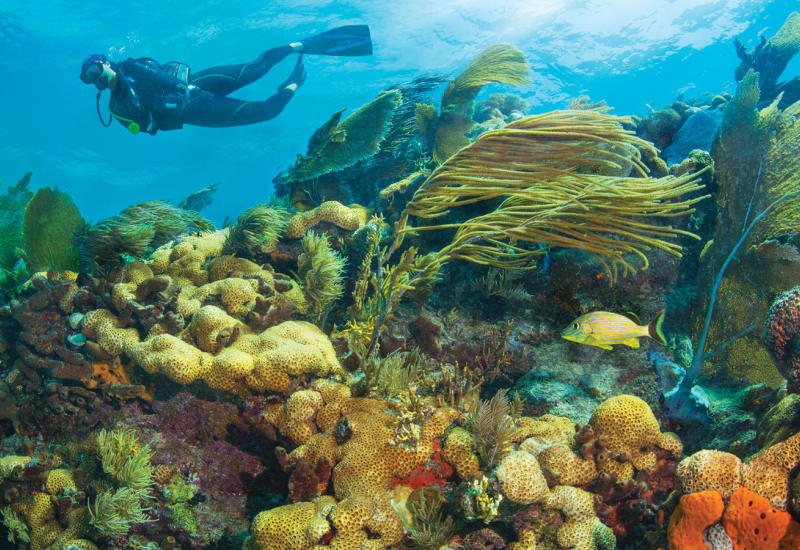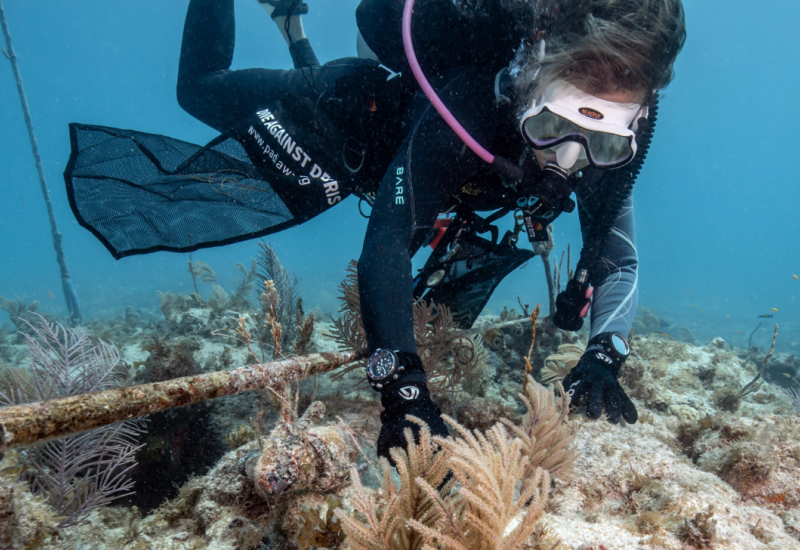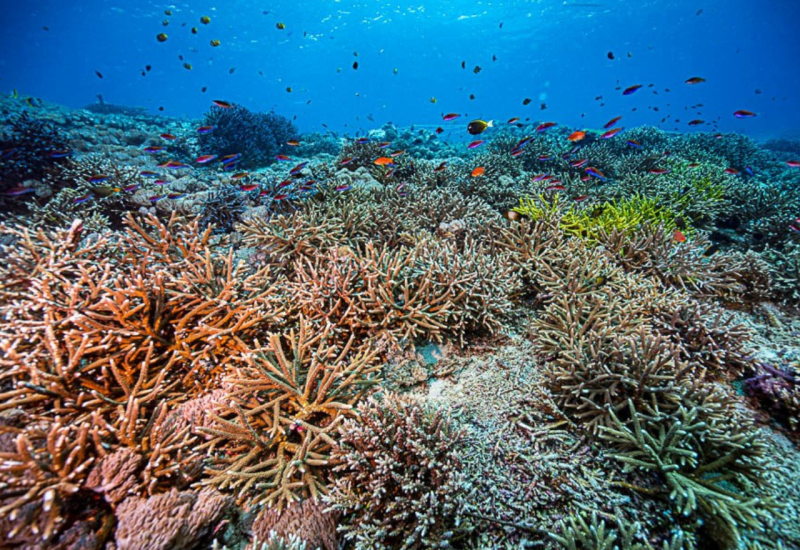How Scuba Divers Can Help Fight Marine Debris
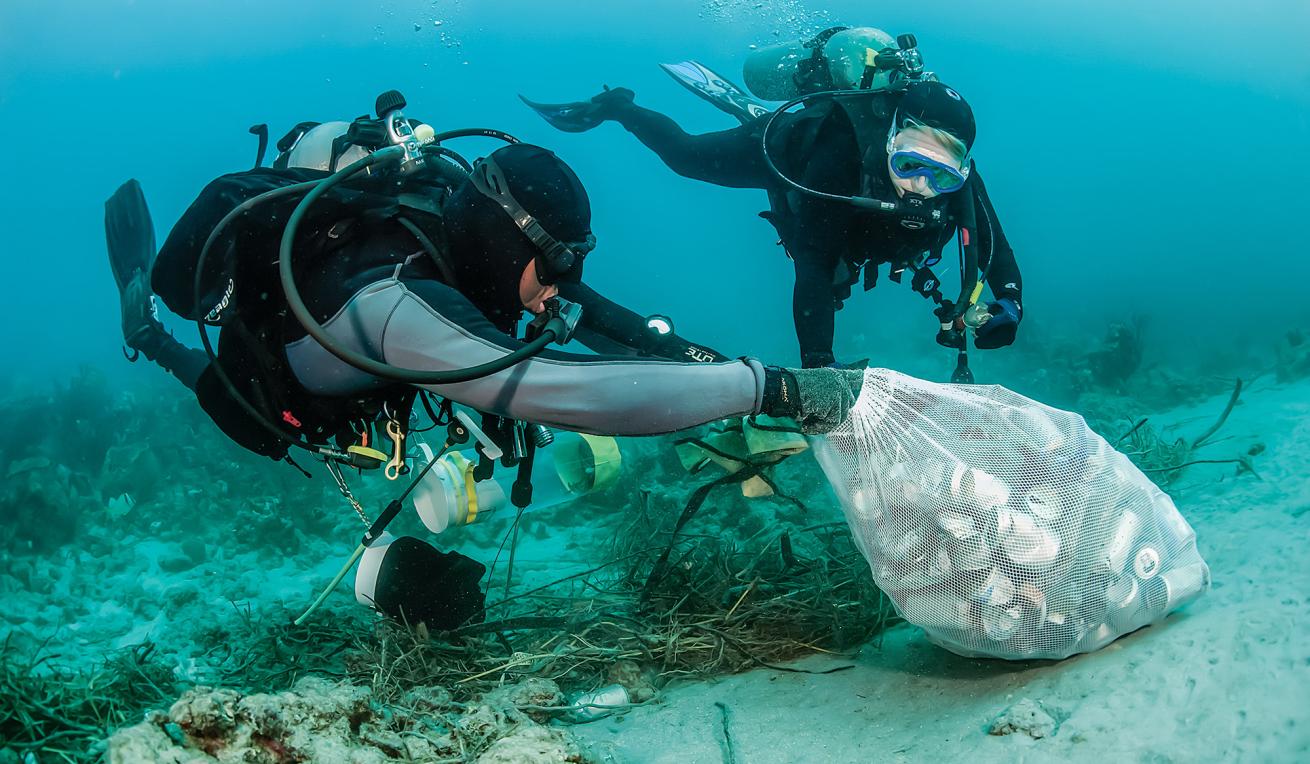
Michael Patrick O’Neill/OceanwideImages.comDivers use a net bag to pick up trash off Palm Beach, Florida.
Our oceans are getting trashed. The growing plague of marine debris affects all things oceanic, from your local shore dive to the most remote coral atoll, along with everything living in it. Thanks to decades of unsustainable consumption and reckless disposal of man-made materials — especially plastics and abandoned fishing nets and equipment — we are facing a dark future. According to a 2016 report by the Ellen MacArthur Foundation and the World Economic Forum, there will be more plastic in the world’s oceans than fish (by weight) by 2050. As divers, however, we are on the front line of a building battle for recovery.
“Our ocean is under siege by trash generating a wide range of environmental, economic, health and sociocultural impacts, not to mention threatening marine life through entanglement, suffocation and ingestion,” says Domino Albert of Project AWARE, which started its Dive Against Debris campaign in 2011 to activate divers in a global marine-debris removal-and-survey effort. “Divers are uniquely positioned to take action against marine debris, as they are the first to see the devastating effects underwater and have the skills to remove it.”
As conscientious divers, we need to remove as much of this debris as possible, even if it is one piece at a time — because that single piece could save an animal’s life.
“A recent United Nations Environment Programme report included a staggering statistic: Eight million tons of plastics enter the oceans every year, but only 5 percent of it stays at the surface, which means 95 percent of it is underwater,” says Kurt Lieber, founder and executive director of Ocean Defenders Alliance, a marine conservation organization focused on removing abandoned and lost “ghost” fishing gear. “As conscientious divers, we need to remove as much of this debris as possible, even if it is one piece at a time — because that single piece could save an animal’s life.”
“There are an estimated 6 million certified divers worldwide, so if every one of us decides to make a small effort and pick up a piece of garbage from the sea bottom, the multiplied effect will be huge,” says Edgardo Ochoa, the marine safety officer for Conservation International who established a national program in Panama that trains divers to remove ghost fishing nets. “However, it’s more important not to litter in the first place, and for divers to be active and vocal ocean ambassadors.”
Take It or Leave It
With firsthand knowledge of marine debris, divers can play an integral role in fighting the tide of trash destroying precious environments. But we need to temper our judgment to intensify our impact, decrease our potential for further damage, and increase our own safety.
“Marine debris is defined as any persistent manufactured or processed solid material that is discarded, disposed of or abandoned in the marine and coastal environment,” Albert says. “Not sure what you’ve collected? Is it the remains of a plastic bag or is it a food wrapper? The Dive Against Debris survey tool kit includes a marine-debris identification guide that will help you accurately record and report your data.”
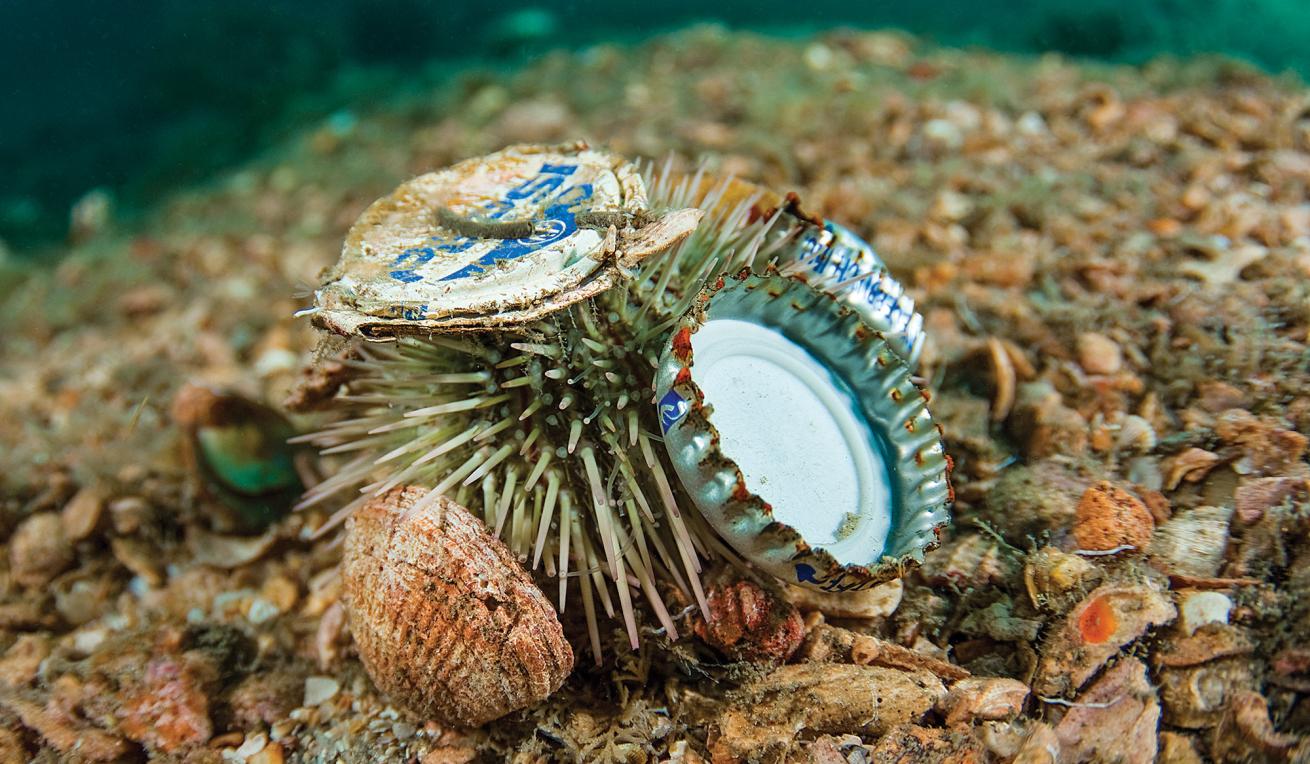
Michael Patrick O’Neill/OceanwideImages.comHabitat or a death trap? Sometimes it’s a judgment call for divers wanting to help marine life impacted by debris.
“Most anything human-made is debris; however, there are some considerations for debris that is already covered, absorbed, or used by marine life,” says Lieber, whose efforts earned him Scuba Diving magazine’s Sea Hero of the Year award in 2015. “If an object is encrusted with benthic life such as mussels, gorgonians or corals, and you feel that removing the item would do more harm than good, leave it alone. The toxins released by plastics can have a devastating effect on the animals that come in close contact with it, including altering their DNA, or deforming highly sensitive eggs and young fish. Also, avoid sites that have historical or cultural significance, as well as sites that are beyond the dive teams’ skill set.”
When marine animals have made a home in pieces of debris, it can be a tough call. “Sometimes it’s worth a short-term disturbance to remove potentially harmful marine debris; other times it might be better to leave the item in the ocean,” Albert says. “Safety should be considered before removing sharp, hazardous and heavy items, plus local laws may apply.”
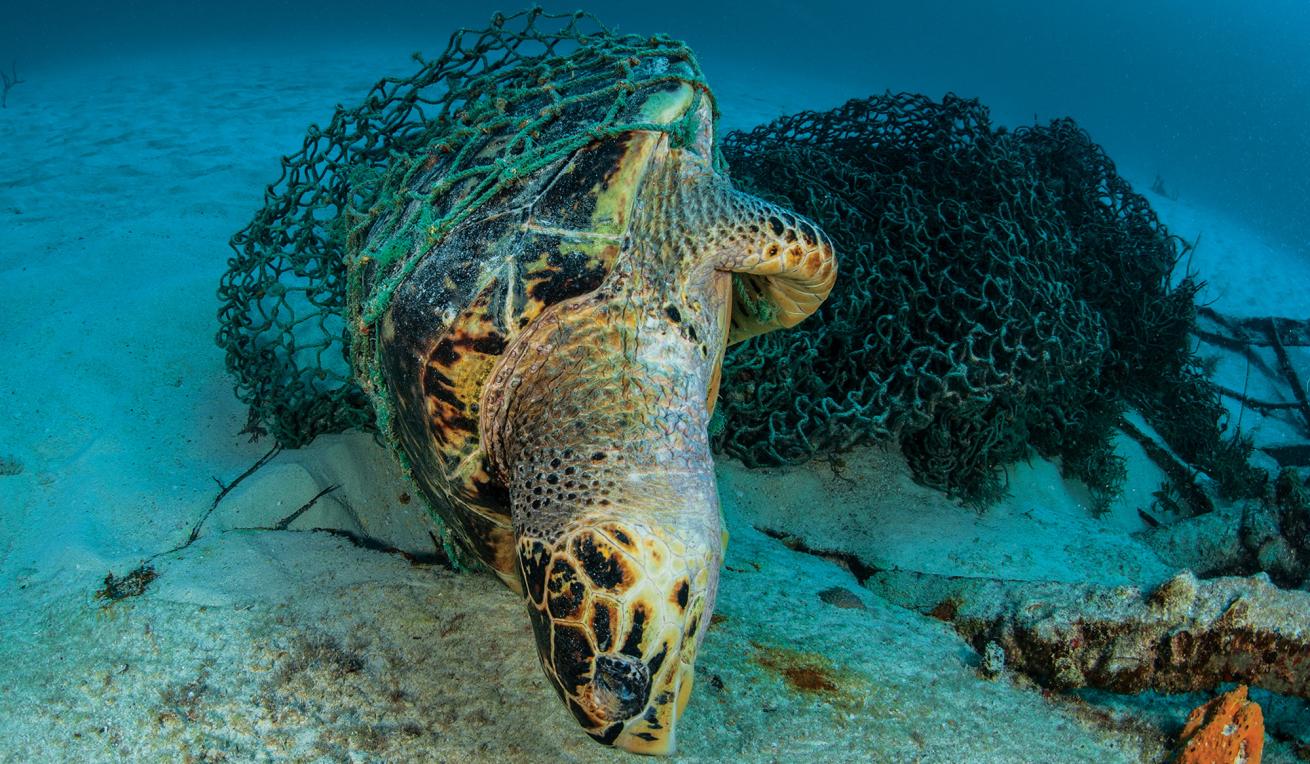
Carlos VillochThe horrifying consequences of marine debris.
Training Before Trash
Many appropriate marine-debris removals are simple. Even a newly certified diver can pick up a plastic bag from the bottom and stuff it in a BC pocket for topside disposal. However, only divers with advanced training and experience should attempt to clear larger items, such as lobster traps or fishing nets.
“Being able to maintain your trim and position in the water column with solid buoyancy as you are working on a task is really important — if you are bouncing up and down, you can impact the very animals you are trying to save,” Lieber says. “Knowing how to safely fill and deploy a lift bag is essential. Before you get to a site, take time to adjust your gear to be as horizontal in the water as possible.”
“Any diver participating in net removal should be trained at minimum as an advanced diver and on the use of search-and-recovery gear and techniques,” says Ochoa. “Before the actual dive operation, practice using lift bags, cutting devices, ropes and lines in a controlled situation.”
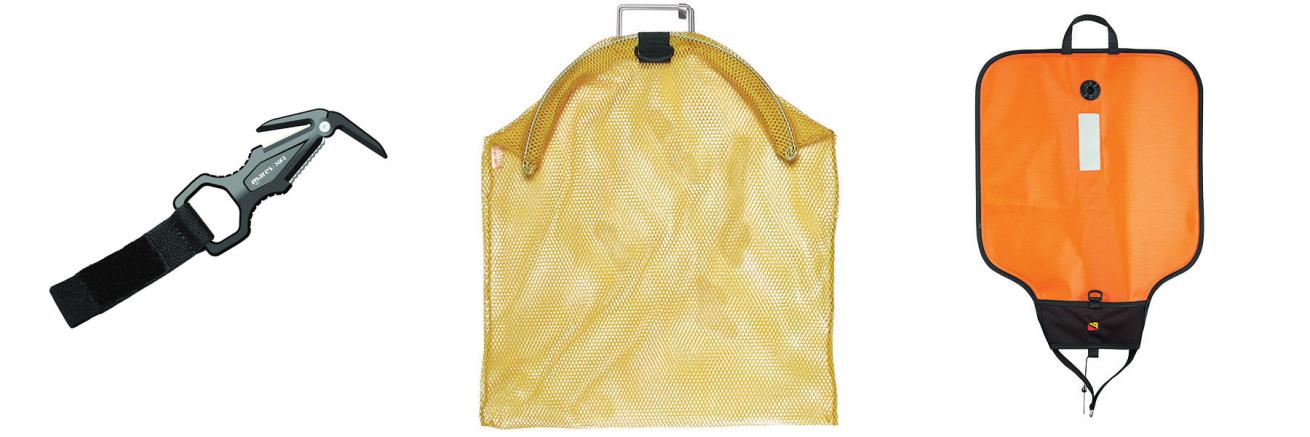
(Left to right) Jon Whittle; Innovative Scuba Concepts; Dive Rite
Mares XR Ceramic Line Cutter Innovative Scuba Concepts Wire Handle Mesh Bag Dive Rite 75-pound Lift Bag $60 ceramic, $80 titanium; mares.com $20; innovativescuba.com $89; diverite.com Available with rust-resistant ceramic or titanium blades, the XR can make quick work of most any entanglement or debris-removal scenario. Rigid metal handles and a smart hinge keep this tough mesh bag open, and make it easy to close securely. It features a D-ring for secure stowage. This low-profile bag has a smart trapezoidal shape that moves more air to the top of the bag. It features an internal dump valve activated by a pull cord to help divers control ascent.
Recovery Loves Company
Getting organized, either on your own or with conservation agencies, is the first step. Joining forces with other divers will not only increase the effectiveness of your efforts, it will also intensify your satisfaction and enjoyment. But divers first need to decide to get involved to become a part of the solution.
“It’s sad and frustrating to be on a remote island and find a plastic bottle or an abandoned fishing line,” Ochoa says.
“We are the source of the problem, but we’re also the solution, so we recognize the power of the diving community to influence change and document what remains for the larger public, for whom out of sight often means out of mind,” says Albert. “Divers are uniquely positioned to take action against trash, fins on and off, through marine-debris removal and leading community action.”
“One of the most fulfilling aspects of volunteering is that you become more acutely aware of the issues you are addressing,” Lieber says. “Removing trash from our marine environment gets it into landfills, where it can be better managed to make sure it is either recycled or contained in an area that won’t allow it to do more environmental damage.”

